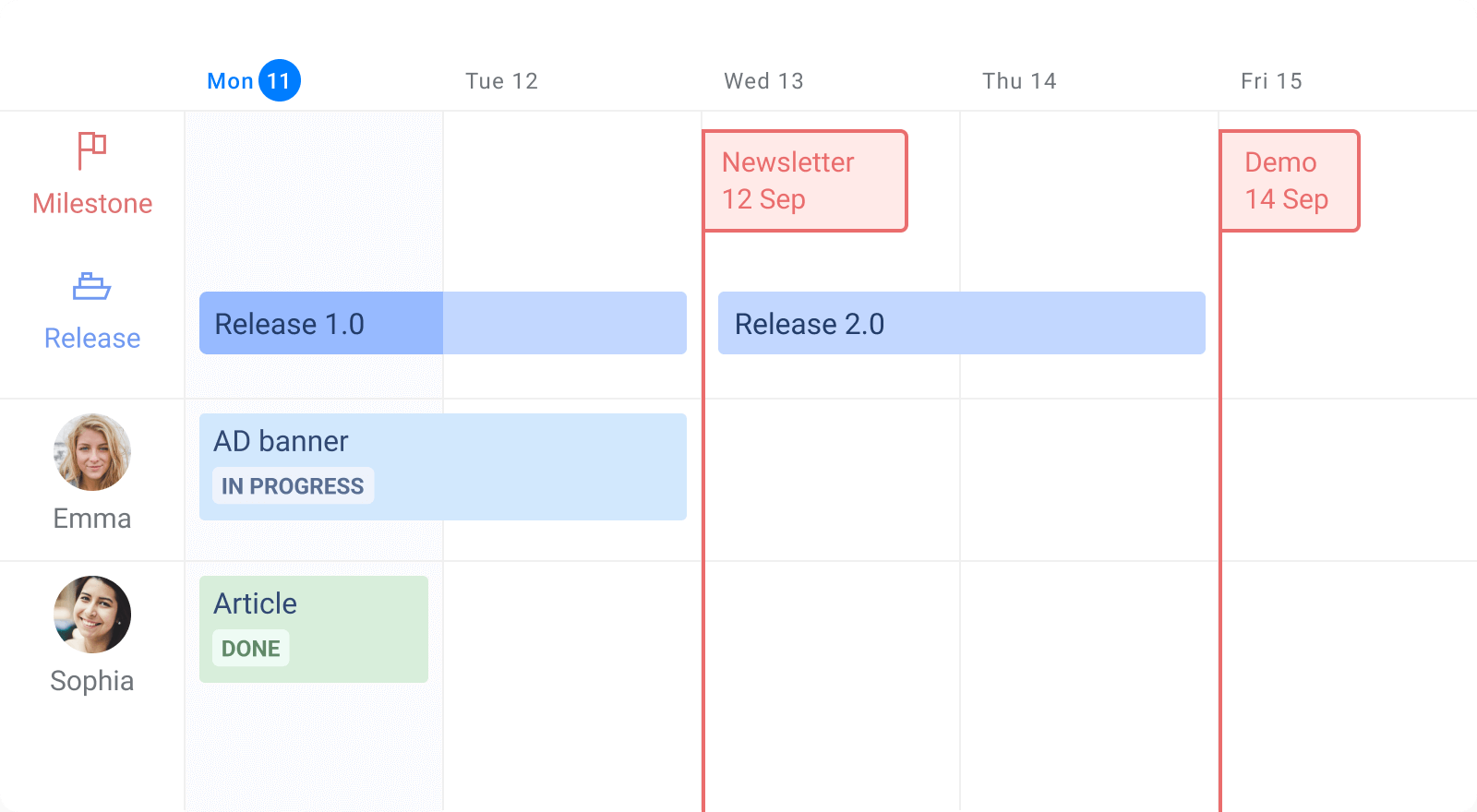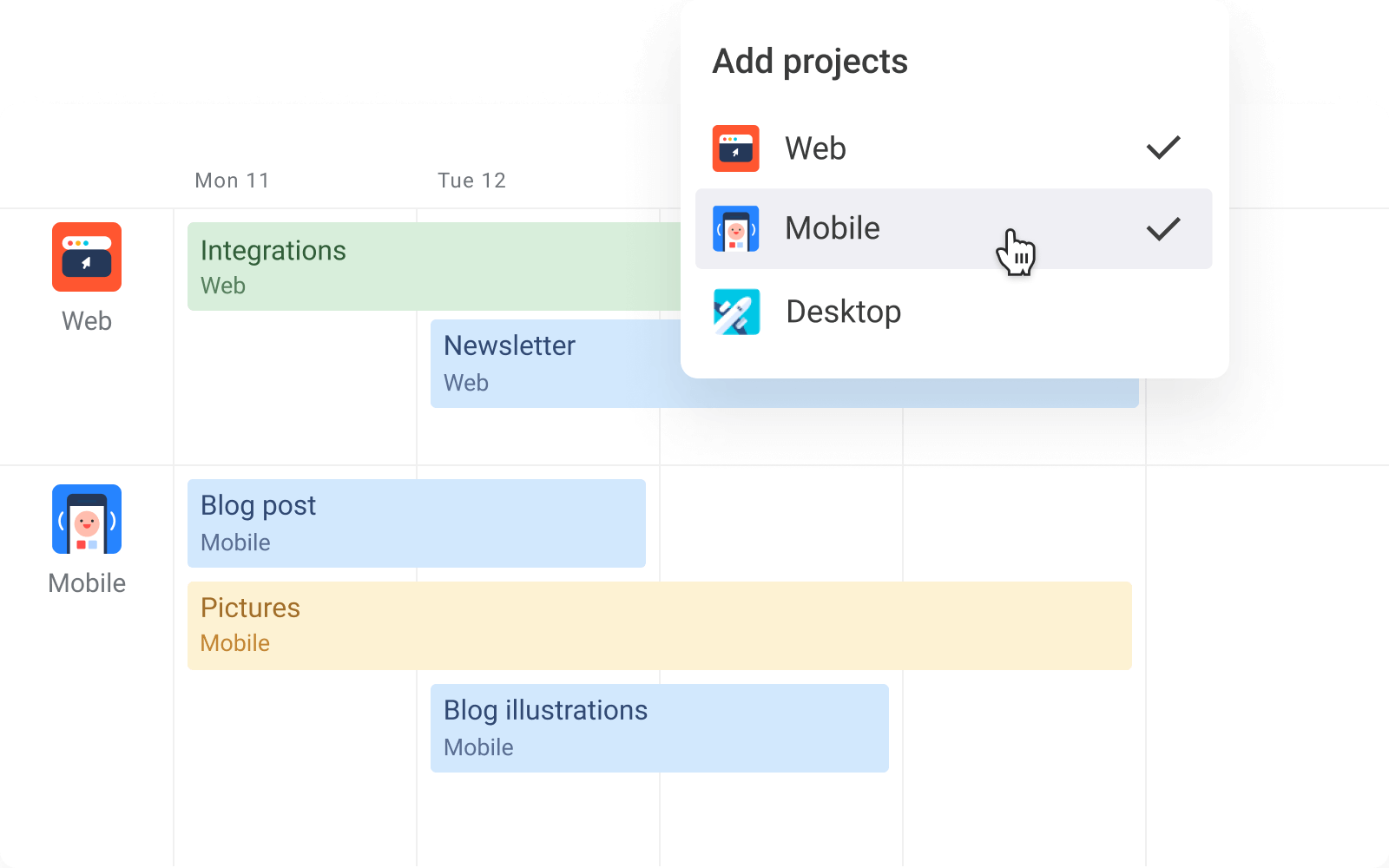Community resources
Community resources
Jira Timeline in 2025: Key Secrets to Manage Projects Visually
Managing projects can feel like juggling multiple tasks at once. To stay on top of everything, you need a clear and organized view of all your project components, deadlines, and milestones. Enter the Jira Timeline, a powerful tool designed to visually map out your project's progress and make your work life a whole lot easier.
What is the timeline view?
The timeline view in Jira is a graphical representation of your project’s tasks, deadlines, and dependencies over time. It provides a visual overview of your project schedule, helping you track progress and plan for the future. You can see tasks, their durations, and how they relate to one another, all in a single glance.
How to enable timeline in Jira?
To enable the timeline view in Jira, you’ll need to open the Timeline tab. And voilà! You now have a visual timeline of your project to work with.
How to use the timeline view in Jira?
Using the timeline view in Jira is incredibly intuitive. Here are the main actions you’ll be performing:
-
Create tasks: add your tasks and milestones to the timeline and set deadlines.
-
Adjust dates: easily drag and drop tasks to update deadlines as needed.
-
Track dependencies: link related tasks to show how one task depends on another.
-
Monitor progress: track the status of each task using color-coded labels and visual indicators.
What are epics?
In Jira, Epics are large bodies of work that can be broken down into smaller tasks (called issues). Epics usually represent major deliverables or milestones in your project. They provide a high-level overview of what needs to be achieved, and their subtasks (issues) represent the specific actions required to complete them.
What are subtasks?
Child issues in Jira are smaller tasks or subtasks that fall under a parent Epic or issue. These are the building blocks of the larger work and represent the actionable steps your team needs to complete. Each child issue is assigned to a team member, has a due date, and moves independently on the timeline.
What are dependencies?
Dependencies show the relationship between tasks, highlighting when one task cannot start until another is completed. For instance, if Task B cannot start until Task A is finished, Task B will be dependent on Task A.
In the timeline view, dependencies are typically shown as arrows connecting tasks. This feature helps you visualize the critical path of your project and avoid delays.
Key timeline features
Jira timelines come with several key features that make managing projects easier and more efficient:
-
Drag-and-drop scheduling: quickly adjust task dates without entering multiple screens.
-
Task dependencies: visualize relationships between tasks to avoid delays.
-
Progress tracking: easily monitor task completion and project milestones.
Customize Jira timeline with Planyway
Planyway is one of the best plugins to enhance your Jira timeline. It provides advanced features that allow for further customization and let you group your timeline from different perspectives: user, team, project, epic, or component.
Track who is doing what and balance workload
A major advantage of Planyway timeline is that it allows you to see exactly who is working on what. By reviewing the timeline, you can quickly spot if any team members are overloaded and redistribute tasks accordingly. This helps ensure a balanced workload and prevents burnout.

Make sure you deliver on time
With a clear visual of all tasks, deadlines, and milestones, you can track progress in real-time and make adjustments if things are falling behind. The timeline also helps you stay on top of upcoming deadlines, so you never miss an important delivery.

Manage work across projects and teams
Jira timelines are not just for individual projects. You can use the timeline to manage work across multiple projects and teams. This is especially useful if you are juggling several initiatives simultaneously.

Manage sprints on the timeline
For Agile teams, managing sprints on the timeline can be a game-changer. You can map out sprint durations, set milestones, and track the completion of tasks within each sprint. This ensures you’re always on track to meet your sprint goals.
Share the project flow with stakeholders
Keeping stakeholders informed is crucial. With the Jira timeline, you can easily share the project flow with stakeholders, giving them a visual of the progress. This keeps everyone aligned and ensures there are no surprises.
Analyze estimates vs tracked time to optimize
By comparing estimated time vs actual time, you can identify areas where your team is underperforming or where tasks are taking longer than expected. This allows you to optimize future project timelines and improve your team's efficiency.
![]()
Other plugins to build the project timeline
While Planyway is an excellent choice for managing Jira timelines, there are other plugins that can help enhance the experience.
-
BigPicture: great for resource management and portfolio planning.
-
Gantt Chart for Jira: provides a Gantt-style chart view to track project tasks and milestones.
Benefits of Jira Project Timelines
Project timelines are essential for successful project management. The benefits include:
-
Improved planning: a visual timeline helps you map out tasks, milestones, and dependencies upfront.
-
Better communication: everyone on your team can see the project flow, reducing misunderstandings.
-
Increased productivity: a clear timeline allows your team to stay focused on their tasks and meet deadlines more effectively.
What is the difference between roadmap and timeline in Jira?
While both roadmaps and timelines are used to track project progress, they have different purposes:
-
Roadmaps provide a high-level view of the project, outlining major milestones, initiatives, and strategic goals.
-
Timelines provide a more detailed, time-based view of tasks, dependencies, and progress over a specific period.
Roadmaps are useful for setting the overall direction, while timelines focus on execution.
Final thoughts
The Jira timeline is a powerful tool for managing projects, ensuring that you can track progress, manage dependencies, and deliver on time. With the Planyway plugin, you can take your Jira timeline to the next level by customizing it to fit your team’s needs. Whether you’re working on a single project or managing multiple teams, the timeline view will keep everything on track.
Was this helpful?
Thanks!
Mary from Planyway
About this author
Customer Support Manager at Planyway
Planyway
Kazakhstan
63 accepted answers
0 comments